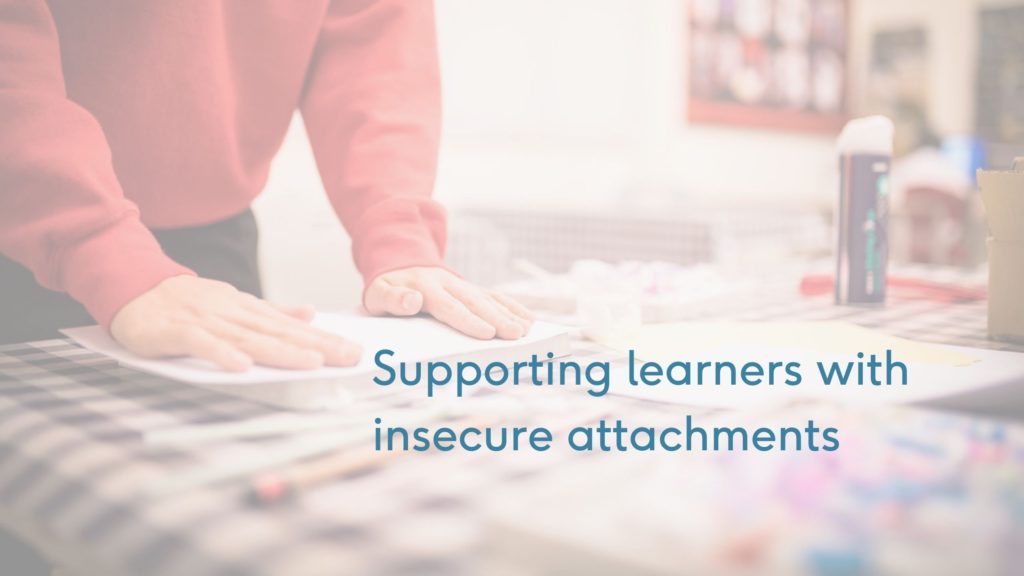How to support learners with insecure attachments

The attachments that are formed early on can have huge effects on how children approach life later on. As adults, we can facilitate some of these needs and make them feel safer and more secure.
Attachment is the forming of a close emotional bond a child develops towards his or her primary caregiver. It is thought that the success or failure of early attachments affects young children’s beliefs & expectations about relationships. This then influences the way children interact with others & evaluate themselves (i.e. self-esteem).
The nature of a child’s primary attachments to caregivers lay the foundations for socio-emotional well-being and therefore children’s capacity to learn. Educators themselves need to establish an attachment-like relationship with their pupils, particularly with challenging and vulnerable pupils, in order to enhance learning opportunities. Secure attachment relationships correlate strongly with higher academic attainment, better self-regulation and social competence.
“Nurturing adult attachments provide children with protective, safe havens and secure bases from which to explore and engage with others and their environment” – (Bowlby, 1988)

When a child forms insecure attachments the likelihood is they may fall into one of these vulnerable groups (however, it is important to say that insecure attachments may also occur within non-vulnerable children as well);
- Children in areas of social and economic deprivation
- Children in care (CIC)
- Adopted children whose early experiences of trauma continue to affect their lives
- Children with a disability
- Children with medical conditions or illness
- Children who have moved home frequently during their early years
- Refugees and children who have been traumatised by conflict and loss
It is also likely that other risks in the family set up will have an adverse effect on secure attachments for children;
- Poverty
- Parental mental health difficulties
- Exposure to neglect, domestic violence, other forms of abuse
- Alcohol/drug taking during pregnancy
- Multiple homes and school placements
- Premature birth
- Abandonment
- Family bereavement
It is vital that above all else in school settings we are able to make the children with insecure attachments feel safe, in fact, this is more important than learning. Tasks need to be differentiated into small and achievable steps with repeated reminders that they are ‘held in mind’ by the teacher.

I have always enjoyed giving these children responsibility for an important task or job – it makes them feel needed and wanted. I remember a pupil having the biggest grin on his face because I had asked him to monitor the register every day.
“Teachers, youth workers and significant adults in a child’s life can provide important attachments for children”- (Bergin and Bergin 2009, Riley 2010)
In most settings, reliable and consistent adults are in place but I try to teach all the children that sometimes there are ‘whoops’ moments in life where things can change unexpectedly and adults may be poorly or need to change roles, and this is fine and part of normal life. Insecure children will find this hard but over time they will learn to accept these ‘whoops’ moments.
Parents of this type of child can be very hard to engage. It will often be as a result of them feeling shame and humiliation. In some cases, the lack of attachment from their child is just too painful to acknowledge. Engaging with the parents in a completely non-judgemental way is vital to building relationships with the whole family unit; a cup of tea and a listening ear can go a long way!








Responses